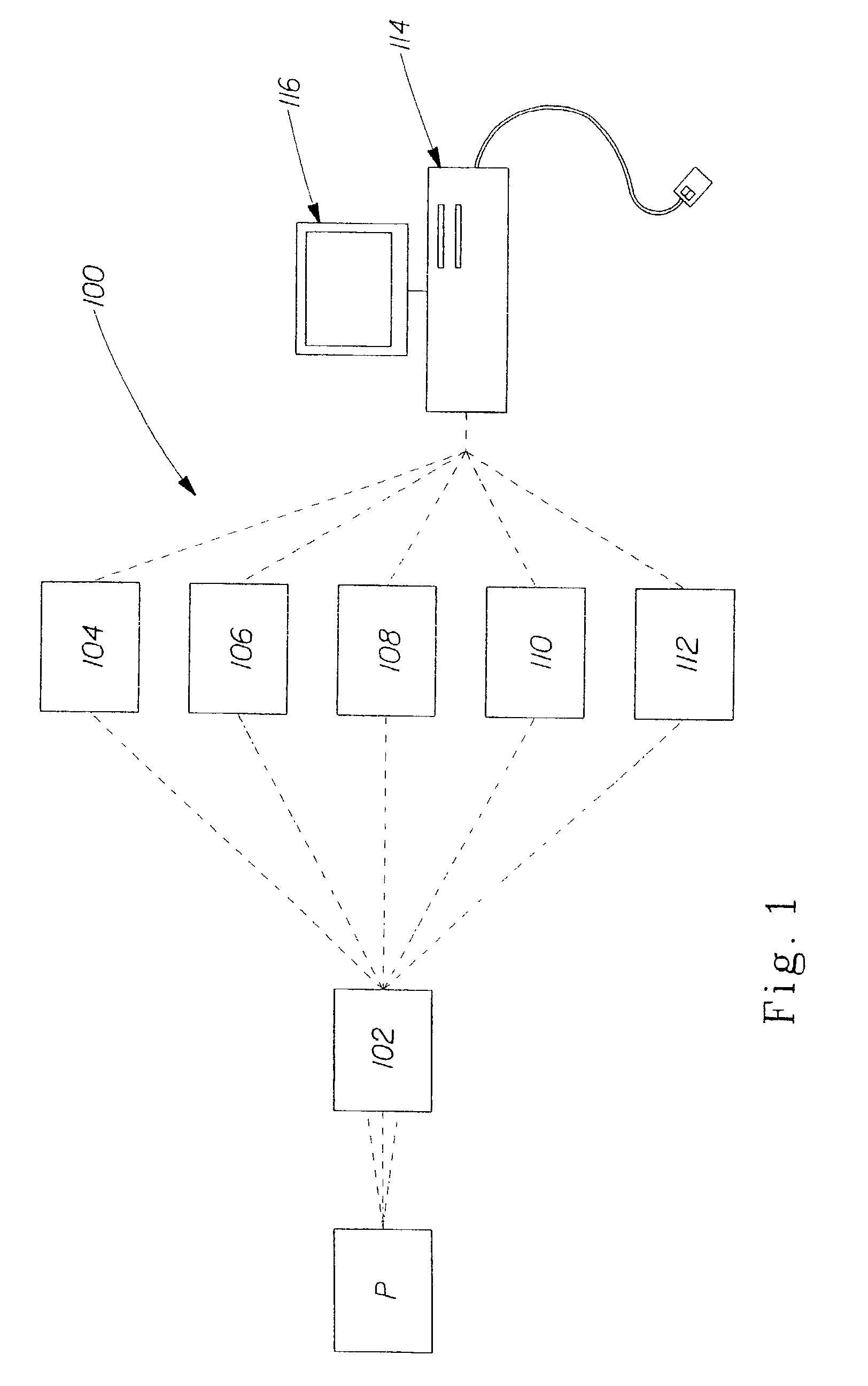Apparatus and method for the detection and quantification of joint and tissue inflammation
a technology for joint and tissue inflammation and apparatus, applied in the field of medical methods and apparatus, can solve the problems of inability to reliably establish the presence of inflammation, crude and inconsistent assessment, and ultimately no definite correlation, and achieve the effect of convenient us
- Summary
- Abstract
- Description
- Claims
- Application Information
AI Technical Summary
Benefits of technology
Problems solved by technology
Method used
Image
Examples
Embodiment Construction
[0040]Referring to FIGS. 1 and 2, a non-human observer or non-clinician apparatus for the detection and quantification of joint and tissue inflammation, generally designated 100, is shown comprising a sensing component 102 for obtaining and collecting data indicative of the surface at the location L of the joint or tissue of a patient P. Preferably, the sensing component 102 comprises various components for assessing inflammation such as a device for detecting swelling 104, such as an optical imaging system, by providing dimensional measurement of the location L of the joint or tissue of the patient P being examined for inflammation, a range-of-motion device 106 for determining the patient's range of motion of the joint being examined, a color analyzing device 108 for analyzing color of the patient's skin at the location L of the joint or tissue, a temperature measuring device 110 for measuring the temperature of the skin S of the patient P at the location L of the joint or tissue, ...
PUM
 Login to View More
Login to View More Abstract
Description
Claims
Application Information
 Login to View More
Login to View More - R&D
- Intellectual Property
- Life Sciences
- Materials
- Tech Scout
- Unparalleled Data Quality
- Higher Quality Content
- 60% Fewer Hallucinations
Browse by: Latest US Patents, China's latest patents, Technical Efficacy Thesaurus, Application Domain, Technology Topic, Popular Technical Reports.
© 2025 PatSnap. All rights reserved.Legal|Privacy policy|Modern Slavery Act Transparency Statement|Sitemap|About US| Contact US: help@patsnap.com



